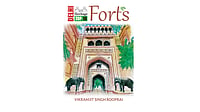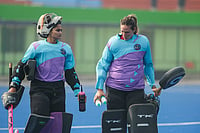It begins with a death, a jostling on one of Mumbai’s notorious local trains and a bunch of irate women who somehow fail to realise that the man with flailing arms is having a heart attack. Legendary firebrand theatre director Amitabh Kulashreshtra slips out of life and releases a can of worms. Not that the worms were absent during his lifetime—he was in court for sedition, attracting the rage of Hindu right wing forces who objected to his stand against Dalits. However, trending as that subject might be, Cut is not a novel about sedition in politics, though it may certainly be about sedition in love with the world of Marathi theatre as its backdrop.
Sreemoyee Piu Kundu puts together a narrative that is divided into three acts, much like a play, the tale of a dead theatre activist, and the women in his life. Sarla his wife, Maya or Mrinalini, the Bollywood heroine with an abusive father and its obvious promiscuous fall-out, Marie Bourdaine, who flits through two chapters without creating too many waves but, establishing a Peter Brook kind of status for Kulashreshtra. Avik and RK are the men who flutter around Maya and Sarla, unable to make an impact against the overwhelming presence of the man who dominates the stage. The stories move backwards and forwards, crossing and re-crossing each other.
Some of these stories we have met before. In Rituparno Ghosh’s film Abohoman, for instance, the tale of an actress-wife betrayed by her protegee. Maya Shirale is typical, down to her fake eyelashes and migraines, as is Avik Dasgupta, the rebellious Bengali director. We also know theatre firebrands like Kulashreshtra, who take up causes, like Safdar Hashmi, ruffle feathers.
Kundu blindsides us with Kulashreshtra’s autobiography of the same name which is flipped over by Sarla, Maya, Marie and Avik in a quest for answers. Blindsides because in the end the book is about another kind of story, the story of comradeship between a man and a woman rather than a political cause. ‘Cut’ is the title of the play that Kulashreshtra was carrying with him in a cloth jhola at the time he died and which gave rise to a host of Chinese whispers until it was finally ‘liberated’ for a hefty bribe.
Kundu’s women are defined by sex—it looms large in their scheme of things and is a symbol of power and exploitation, graphically described. But the background she sets it against is well-researched and evocative and her characters are fleshed out, talented though deeply flawed.
Kulashreshtra appears to have had a powerful effect on those who came into contact with him—whether it was absolute passion or utter hatred. And regardless of this boiling cauldron of emotion, ultimately everyone forgives him. However, because the reader sees him through other people’s emotions, Amitabh Kulashreshtra seems to slip between the lines and the fascination for him is another kind of sedition that the reader cannot quite grasp. But then, sedition tends to undermine all kinds of belief.


























